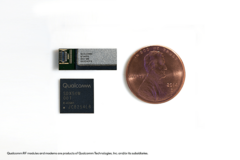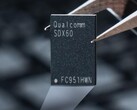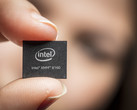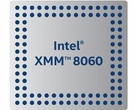Qualcomm has taken wraps off its new antenna modules for 5G New Radio (NR) millimeter wave (mmWave) and sub-6 GHz RF frequencies. The Qualcomm QTM052 caters to the 5G NR mmWave requirements while the Qualcomm QPM56xx series serves the sub-6 Ghz frequencies. Both these antennas work with the new Qualcomm Snapdragon X50 5G modem to deliver capabilities across various spectrum bands. The USP of the QTM052 antenna module is that it is very small and 4 of them can easily fit in a smartphone.
The QTM052 enables the use of mmWave frequencies in smartphones. mmWaves are high frequency waves (24 - 300 GHz) — meaning, lower wavelengths — that have the ability to carry more data and are thus being favored for next generation networks. The spectrum is also currently under-utilized and unlicensed so service providers can use these frequencies to provide high speed connectivity. Even Facebook's Athena internet satellite project is said to use mmWaves for maximum bandwidth. The catch, however, is that mmWaves can be easily attenuated by almost anything — including the human body, the atmosphere, the phone itself, and, therefore, pose many technical and design challenges.
The QTM052 is a fully featured antenna module complete with an integrated 5G NR transceiver, power management IC, RF front-end components, and a phased antenna array. It supports 800 MHz bands in the 26.5-29.5 GHz (n257), 27.5-28.35 GHz (n261), and 37-40 GHz (n260) parts of the spectrum. Anandtech says that these frequency ranges mean that the QTM052 will find primary usage in the US as band 24.25-27.5 GHz (n258) that is meant for Europe and China is not listed. Qualcomm says four such antennas can be integrated in a smartphone (the actual number depend on what all radios the OEM decides to include) and combined with the Snapdragon X50 modem, the QTM052 can help overcome most of the attenuation problems of mmWave in dense urban areas and crowded indoor environments. It's not just about the modem and the antenna, though. Mobile towers also need to be upgraded to provide line-of-sight to these antennas for proper 5G mmWave reception.
Qualcomm is also announcing a new set of sub-6 GHz antennas for broad 5G NR coverage with the QPM56xx RF module family. All four RF modules in the family support 3.3-4.2 GHz (n77), 3.3-3.8 GHz (n78), and 4.4-5.0 GHz (n79) sub-6 GHz bands. These antennas work in tandem with the QTM052 and the Snapdragon X50 to provide maximum 5G NR coverage.
So when can we see these modems in action on our smartphones? Very soon, in all probability. Verizon hopes to start rolling out its 5G networks by the end of this year and even Qualcomm is optimistic that the first 5G devices show up on store shelves by early 2019. OEMs are currently being sampled with these modems and antennas so barring any issues on the ground, the expected timelines for the first 5G devices should be possibly met. It is to be noted that the Snapdragon X50 is a 5G-only modem so the OEM still has to integrate 4G radios separately. It remains to be seen what sort of trade-offs this will have on power and size of upcoming smartphones.


 Deutsch
Deutsch English
English Español
Español Français
Français Italiano
Italiano Nederlands
Nederlands Polski
Polski Português
Português Русский
Русский Türkçe
Türkçe Svenska
Svenska Chinese
Chinese Magyar
Magyar





















